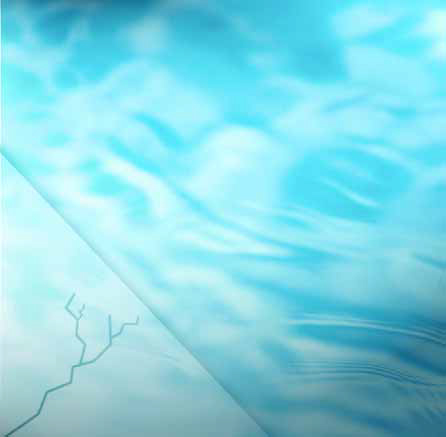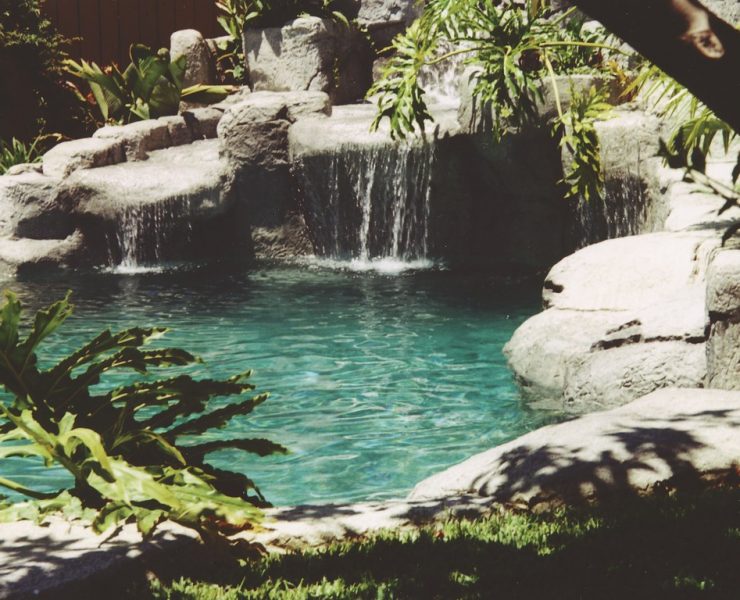engineering
An important part of creating beautiful commercial watershapes is designing systems that actually work, effectively and enduringly, within the requirements and constraints of their given settings. This has become a real issue in the fountain business, where new demand is popping up at locations as diverse as resorts, malls, hotels, art pavilions, office buildings, convention centers, museums and even restaurants - and a few too many good-looking designs have been pulled out, significantly downsized or turned into planters because they just haven't performed as needed or
Everyone is concerned these days about electricity, gasoline and natural gas and all other forms of energy. What is amazing is that, despite this surge in interest, very few people have considered ways in which swimming pools can be built to reduce the energy required to heat them - and by substantial amounts. This dearth of energy consciousness has nothing to do with the manufacturers of heating equipment. It's fair to say that most heater manufacturers - whether they pursue combustion heating with fossil fuel, compression heating with heat pumps or passive heating with radiant solar, absorbent solar panels or solar covers - all have optimized their own products and made them remarkably energy-efficient. The same is true of recirculation systems: Pumps of all kinds are optimized to very high efficiencies, and the pool and spa industry has made positive improvements in acknowledging the necessities of hydraulic efficiency (although it's fair to say we
Interactive watershapes are all about invitations to play. For designers, interactive watershapes provide invitations to use water and the control of flowing water to create unique play environments. For children, teenagers, parents and other adults, they are invitations to play with one another in a safe and exciting aquatic playground. It's a form of invitation that's rapidly gaining popularity in an era when playtime for both children and adults has become excessively passive and dominated by surfing the net, playing computer games or staying glued to
It's a tale of two professions: Pool and spa people are taught to keep things dead; pond people are taught to keep things alive. Pool people sell chlorine; pond people sell de-chlorinator. Pool people sterilize; pond people fertilize. This contrast in approaches to basic water maintenance is perhaps the most significant difference between two trades that are coming into closer and closer contact with one another every day. At issue between the two groups is whether to work against nature in a sterile system, or work with it to create an ecosystem. Each discipline has a foundation in the science of water chemistry and both have a place in the world - but beyond that (and as the table below demonstrates), things really couldn't be much different. As more and more pool/spa professionals move into water gardening and more and more landscape designers and architects get into pools and spas, there's an increasing need for all of us to understand these water-treatment distinctions and the basics of each approach. I come from the pond side, so I'll cover things from that perspective in a pair of articles - a science-oriented overview this time before we
The consumer's appetite for beautiful water and creative watershape design has grown by leaps and bounds in recent years - and expectations, it seems, are rising right along with the hunger for exceptional details and impressions. Perimeter-overflow pools and basins are what an increasing number of consumers are after these days, and there's special interest in what are called "wet-edge applications," where the water rises to deck level and flows into a channel slot at the back edge of the coping. It's an amazing look - and harder to
Some details seem simpler than they really are. A case in point is the one I'll describe this time - a detail I call a thermal ledge. In one sense, it's really just a large a big bench located a few inches below the water's surface, but in terms of what it is structurally and what it does to increase enjoyment of a pool, it's something truly special. The ledge pictured here is visually interesting in the way its stone surface picks up the rockwork used throughout the deck and the barbecue area and within the pool itself. As important, it provides the homeowners and their guests
Whether it's done using only a tape measure and a pair of experienced eyeballs or requires the help of satellites orbiting the planet, every construction project is surveyed before the work begins. In fact, surveyors have been plying their trade for thousands of years, and their services have been valued for one simple reason: It's really a good idea to measure the size and shape of the ground before you try to build on it. In today's terms, surveying is defined as the process of taking accurate measurements of the land on the X-, Y- and Z axes (that is, in three dimensions) and then translating that data into a usable (usually printed) format. There are several different surveying methods used to measure, process and communicate this critical information, and choosing the right one is essential to getting any watershaping project off to a sound start. So how do you determine the level of detail required and communicate your need to the surveyor so he or she can give you the appropriate level of information? Let's take a look at the different types of surveys in common use and review what those options mean in terms of creating a truly useful array of
When it's completed sometime in mid-2002, the Mesa Indoor Aquatic Center will be among the premier U.S. facilities for competitive swimming, diving, water polo, synchronized swimming and synchronized diving. Once it's up and running, MIAC will be the country's largest indoor competitive swimming facility owned and operated by a municipality; just as certainly, it will also act for years to come as host to countless world-class aquatic competitions. A project like this
It's something we in the business overlook all too often: Swimming pools, kids and summertime go together. That's why pools have been so enduringly popular, even at a time when watershapers seem to be focusing more than ever before on principles of design and how their work can be artfully integrated into the landscape. I came to building pools from an extensive background in building man-made rocks for theme parks, which has colored my perspective on the way my pools are used. I've also been swimming in backyard pools since I was a kid, and I've built all sorts of rockwork designs for all sorts of






















